Oaxaca – our first love
It was the first time that we flew across the pond together and got to know a completely different culture. For two weeks we would discover the region of Oaxaca – in the very south of Mexico. There is a lot to see here – the rustic capital Oaxaca de Juárez, the old sites of the Zapotecs, one of the oldest trees in the world and Puerto Escondido, the hotspot for surfers.
However, Oaxaca is not the number one destination for foreign tourists. The eastern regions of Chiapas, Yucatán and Quintana Roo are much more developed for tourism. Oaxaca is the Mexican region with the largest indigenous population – and at the same time one of the poorest in Mexico. But the region has so much to offer during a visit.

Schnapps, liquor and maggots
Everything was so new when we took the bus to the centre of Oaxaca de Juárez. We didn’t speak Spanish at the time and the buildings looked different. More colourful. Wilder. Decayed. We entered our hostel, which was right next to a park. Colourful posters adorned the path – a party was advertised that would take place on the same day. The Mezcal Festival. What timing we had.

So it was soon clear how we would spend the first evening in Mexico – with high-proof avagen schnapps. It was loud when we left the hostel. The inhabitants of Oaxaca celebrated in great numbers and there was a jam at the entrance gate to the festival. Behind the gate, sellers presented countless different Mezcals. The most famous Mezcal in the world is without doubt the Tequila, which was difficult to find here. He comes from another region.

The atmosphere was exuberant, bands played and many Mexicans danced to the sounds. The smell of liquor and frying oil was in the air – because we soon realized that Mexicans love to throw food in oil. By the way: insects at the very front. Always after a few meters we got offered plastic bags. In those were small grasshoppers, maggots or caterpillars densely packed. It was perfectly normal. And fried everything tastes pretty much the same anyway.

Cultures over 3000 years old
On the next hungover days we decided to visit the old site of the region. We heard a lot in the city of Monte Albán, the former capital of the Zapotecs. This magnificent complex was only ten kilometres away. We got on the next bus and went to the ruins from the 8th century BC.

The bus stopped a few hundred meters before the actual ascent of Monte Albàn. An imposing stone staircase led up a hill that led to the main square of this city. At the top you could see the whole extent – up here was a plateau of 600 m², dotted with many temples. Much has been artificially created, such as burial mounds or hundreds of terraces. It was simply imposing to stand in the midst of this green force and to experience the vastness of Monte Albàn.

There were relatively few visitors in the complex throughout the day. Many of them were Mexicans, including many students on a school trip. The people of Oaxaca are very proud of their cultural history. Many of them could only speak Spanish sporadically. This is where Zapotec is spoken – an old indigenous dialect from pre-Columbian times.
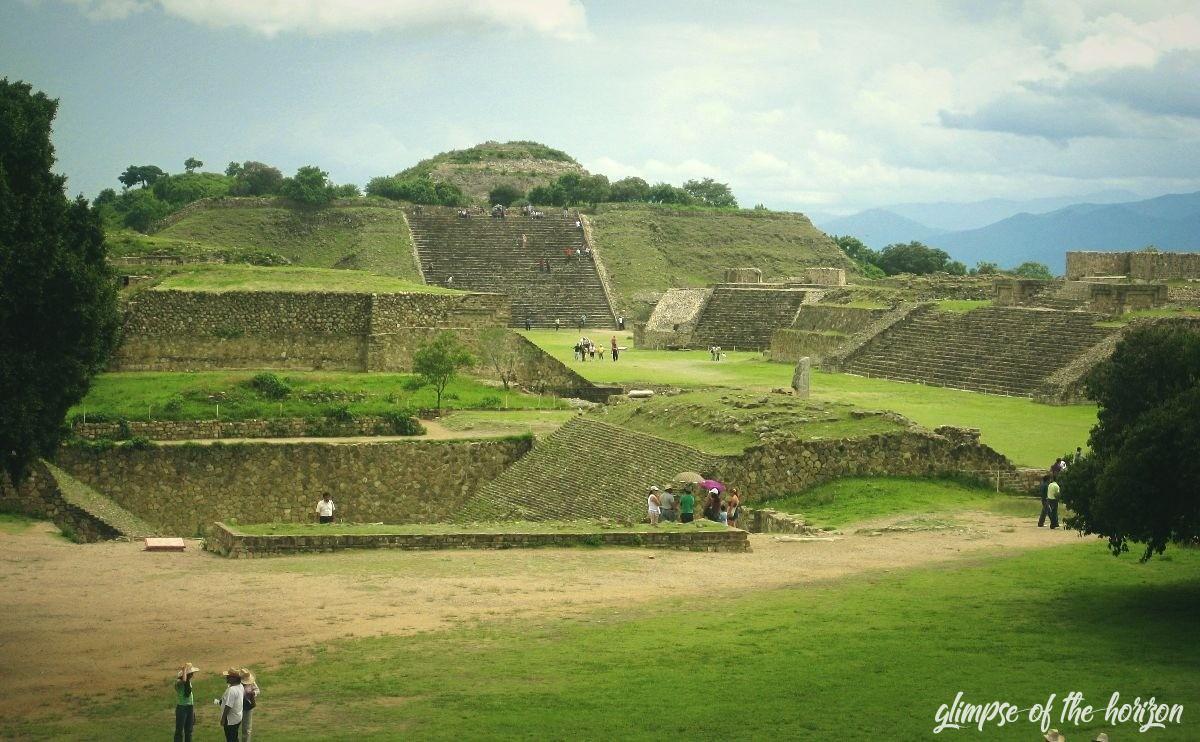
Old houses, old cars, old trees
There are three sites in Oaxaca to visit. Besides Monte Albàn, this is Mitla, the cult centre and residence of the high priest, and the Árbol del Tule, the tree of Tule. After the impressions of Monte Albàn we drove to both places, which are close together. First of all: Mitla was interesting, but if you had seen Monte Albàn before, it wasn’t so exciting for us anymore.

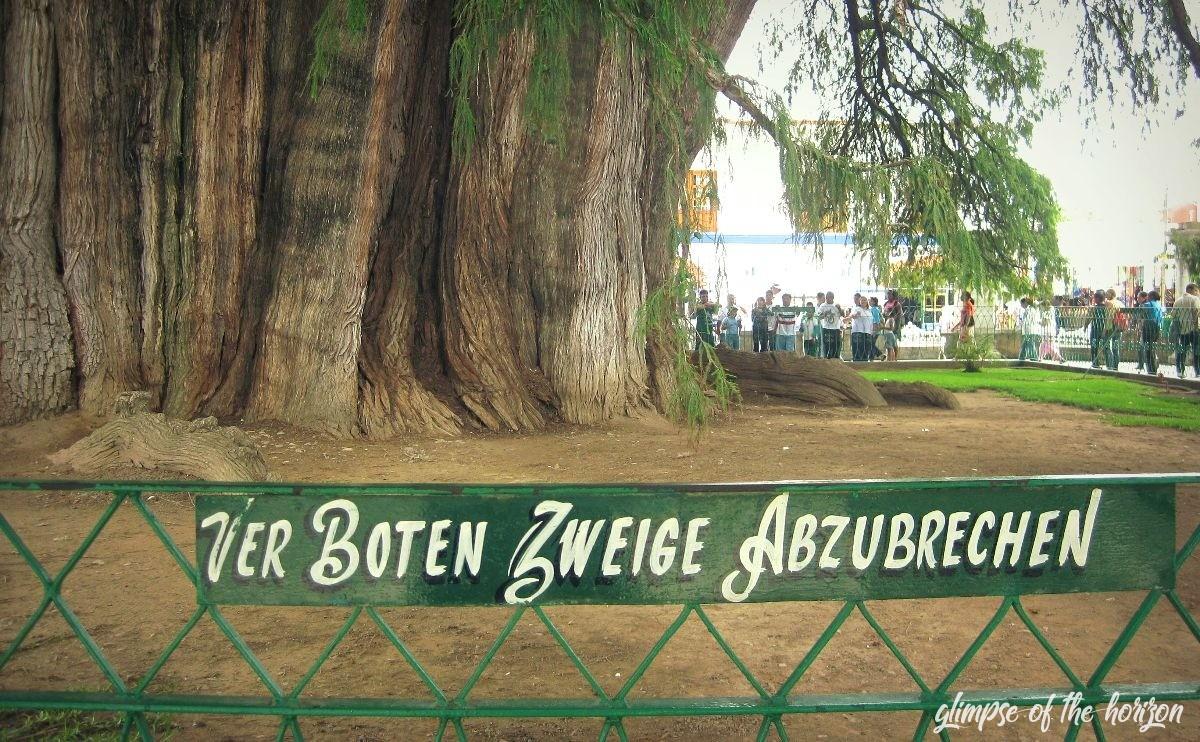
The Árbol del Tule, on the other hand, was impressive. With its age of over 2,000 years, it is one of the oldest living creatures in the world and weighs almost 650 tons. We sat in his huge shadow and worked through the last days and impressions. So much has affected us. We walked away from the hustle and bustle of the tourists by the huge tree and strolled through the streets.

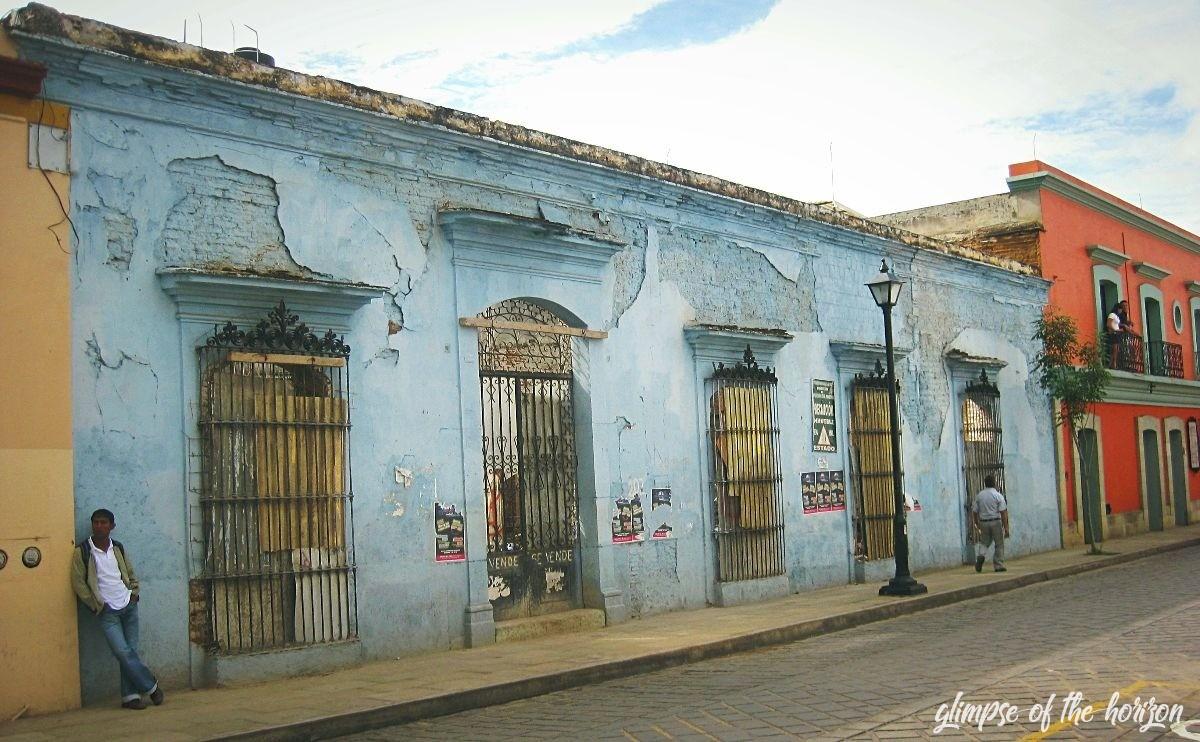
Oaxaca is partly bitterly poor. Houses have fallen apart. Cars have had their best time. But Oaxaca has a very special charm and a lot to give. The colours of the houses had captivated us. While they were standardised and grey in Germany, the houses here flourished with joy, even though their façade was crumbling. Then they painted on the facade. As long as it laughed.
It’s this lighthearted heaviness we felt everywhere. The people are nice and polite, they are proud of their culture – they have it hard in life and have to live with less than their compatriots in the rich parts of Mexico. This way of not pretending, but at the same time being extremely hospitable and curious, has drawn us into the Latin American spell ever since.
The sunny side of Oaxaca
A few days later we were sitting in the hangar of a small bus company. Our things were packed and we wanted to make a side trip to the sea after the days full of culture. Our destination was Puerto Escondido, the surfing location in southern Mexico. The distance from Oaxaca de Juárez to Puerto Escondido is about 250 kilometres – in Germany it takes about 2.5 hours. This route took about seven hours and turned into a real nightmare.
We suspected that the goal would be worth it – yet it was oppressive to be in the back seat of a minibus, on us backpacks of all passengers and below us a much too hard seat. A stop was planned for the trip. Felt every 100 meters were brake thresholds in the road, which brought our vehicle almost to a standstill. Additionally the entire seven hours Mexican folklore was playing. The fact that our stomachs were not doing too well made the trip adventurous.
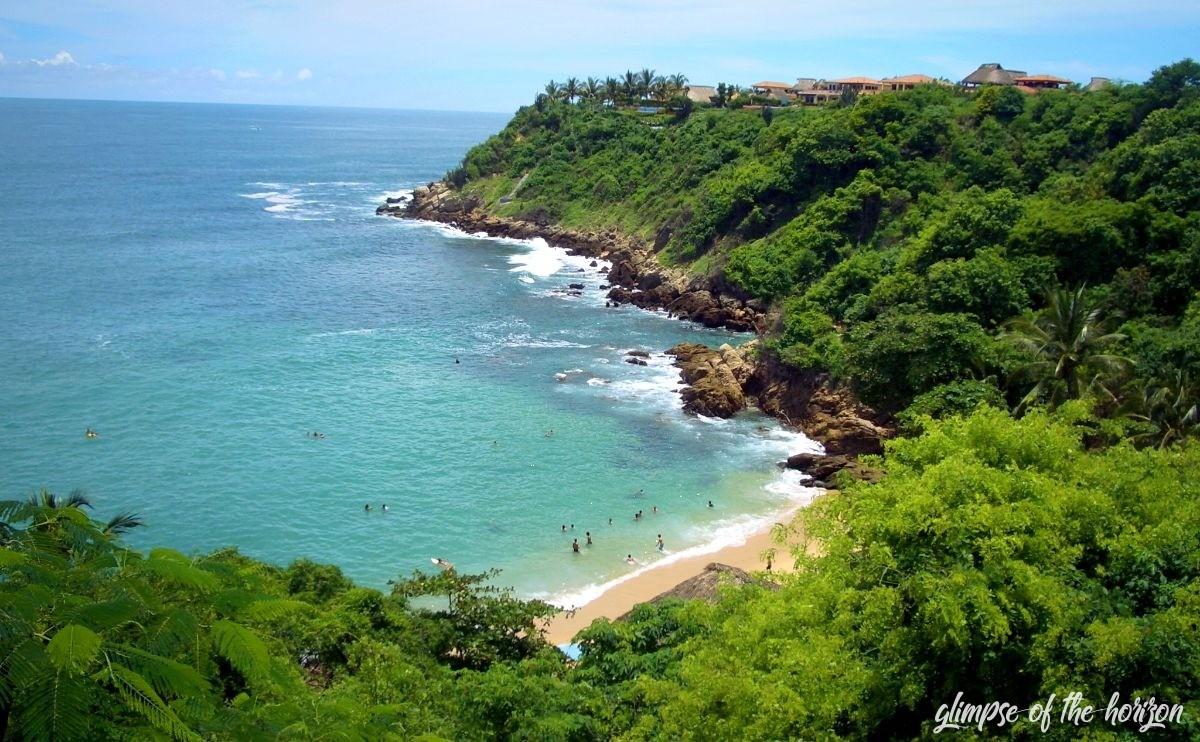
The reward: Puerto Escondido. We arrived early in the nowhere of the small town and orientate ourselves at the sea. Before we left for our hostel, we had to see it. Behind countless powerful green palm trees hid an entrance to the sea. A stairway led down and on top one had a wonderful view over the Pacific. What a beautiful sight, where we could hardly get enough of each other.
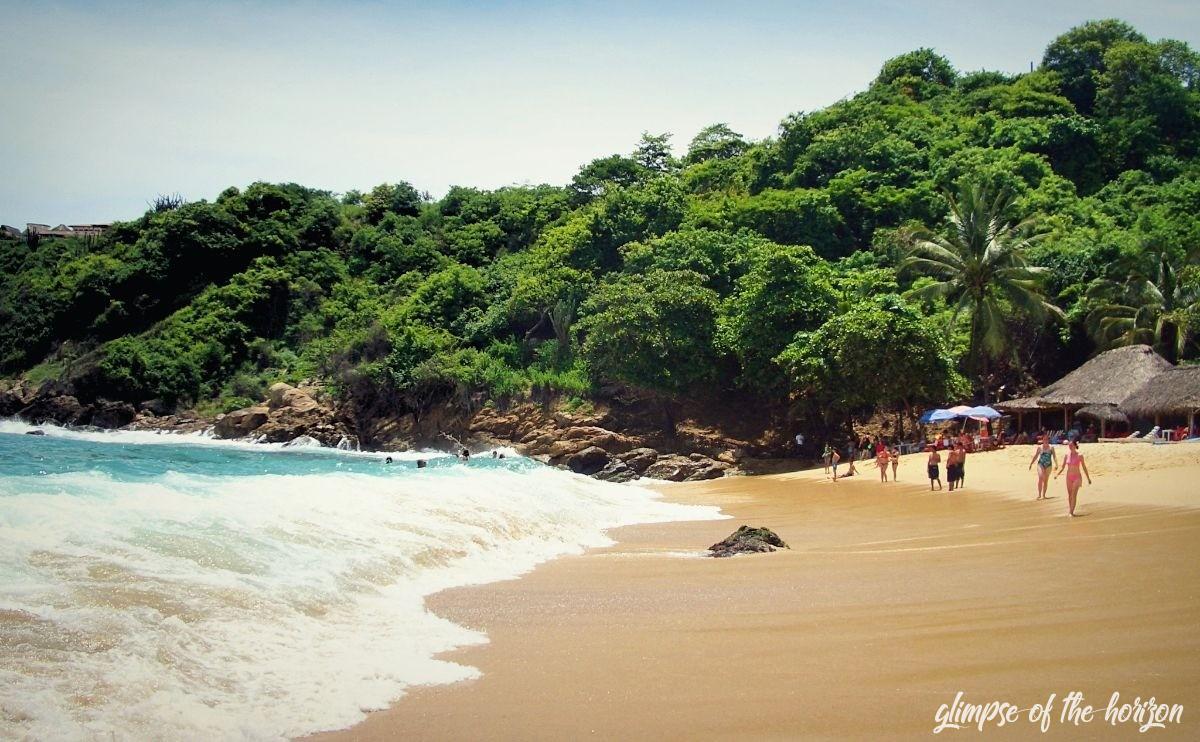
Puerto Escondido is an unagitated little town that hosts tourists from all over the world. It is hardly comparable with the rest of the region, as there are many more foreign influences here. Besides surfing, chilling and partying is on the agenda. We drifted at the pace of the city and took it as a welcome conclusion to our first Latin American experience. And it should not be by far the last.
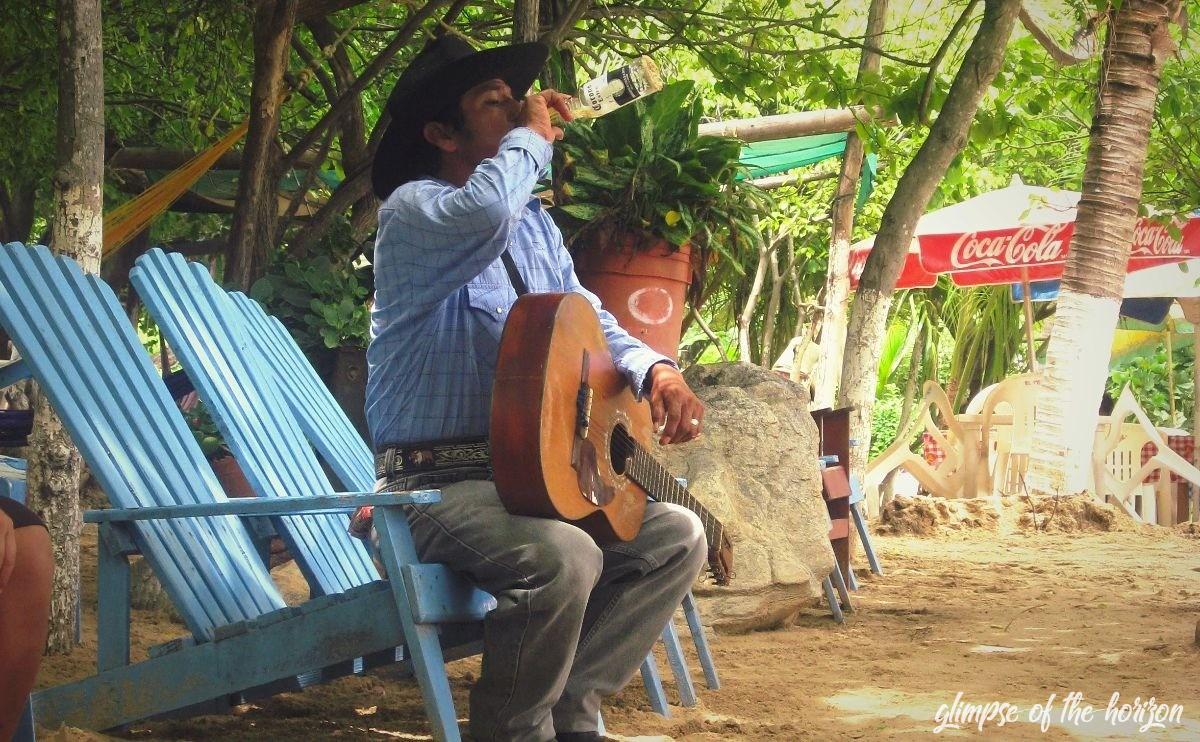
¡salud!
What stays in mind
- First time in Latin America.
- Dancing overjoyed to music with lyrics you really don’t understand.
- The taste of coriander, which was ubiquitous.
- Eating so spicy that you can’t continue eating because of crying.
- Never in the backseat again.
- With over 100 mosquito bites per leg the itching stops.

